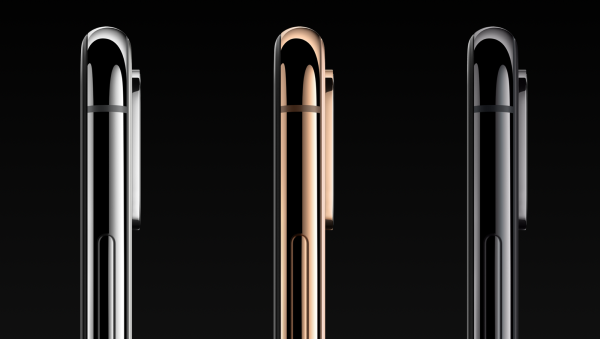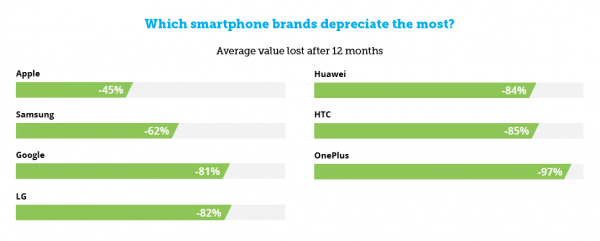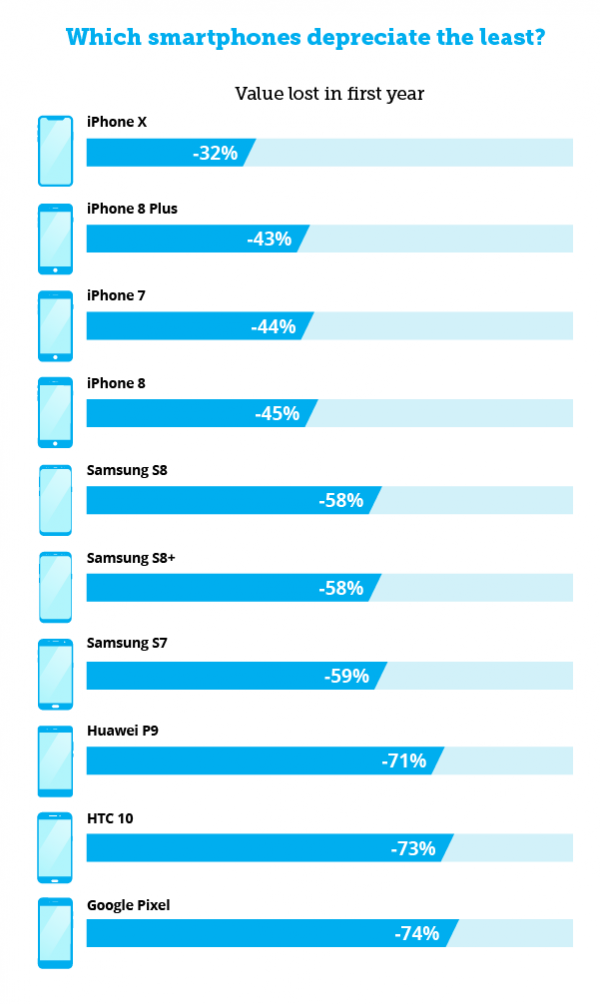It blows my mind how many people preach this conspiracy theory. Marques Brownlee, the one tech reviewer who loves tech without being a fanboy in either direction, explains it best.
When We Shifted from "Smartphones" to Actual Smartphones →
Nokia and Blackberry were skating to where the puck was going to be, and felt nice and fast and in control, while Apple and Google were melting the ice rink and switching the game to water-skiing.
At the time, Nokia and Blackberry seemed to be leading the way to the future. There weren't wrong…but iPhone and Android completely changed the game.

iPhone Forever →
MG Siegler on The $1,500 iPhone, the next (last?) stop on the march towards 'Apple Prime':
It just makes sense. I do believe this year may be an aforementioned test of Apple’s customers willingness to pay insanely high prices for a phone. I can’t see the trend continuing with the $2,000 iPhone. But actually, I can! It will just be obfuscated by monthly payments. Just as it used to be in the days of carrier subsidies! But this time, such payments will be going directly to Apple.
Again, this is already happening for those of us on the iPhone Upgrade Program. And it means there is no $1,500 iPhone, it’s more like a $60/month iPhone. And you can easily talk yourself into it because thanks to being eligible for a yearly upgrade to the latest iPhone, you’re never paying full price for a device. Instead, if you do the math (which most won’t), you’re paying roughly half the cost for the top-of-the-line model over that year.
Of course, you’re also paying Apple in perpetuity! And this monthly bill is only going to go up as they bake in AppleCare (which they do), theft protection (new this year!), and eventually all sorts of other goodies: iCloud storage, Apple Music, Apple Television (the service, not the box), etc.
This is how Apple truly becomes a services business. And it’s happening in front of our very eyes.
This is exactly what makes Amazon Prime so successful — start with a killer service, charge a monthly fee, constantly add new value and perks to make it impossible for subscribers to leave, and slowly raise the price.
I can absolutely see Apple working towards this.
I’m not sure when Apple realized and started executing upon this gradual price increase strategy. My best guess is just after 2011, when the top-of-the-line price started inching upwards again. Perhaps (almost certainly?) not coincidentally, this was the same year they let carriers subsidize old models down to $0. Apple let the lowest iPhone hit the bottom in order to set the top-of-the-line on a trajectory towards the stratosphere.
And it worked, rather beautifully. Now, I believe, the $1,500 iPhone offers a glimpse into Apple’s next phase. The $99/month, forever, iPhone.
iPhone forever.


Smartphone Depreciation →
Like most technology, smartphones lose their value over time. As new models are released with improved features and capabilities, people start to lose interest in older models, and with this decreased demand comes a dip in value.
However, this depreciation doesn’t always happen at a steady rate – certain things can cause sudden drops. Knowing the best time to sell your phone can help make sure you get the most money possible.
Apple Slowing Down Old iPhones →
Brian X. Chen of NYT:
What Apple is acknowledging is a power management technique in which the iPhone scales back processing power to keep the device running for longer when its battery health is low. Lithium ion batteries have a limited number of charge “cycles” before they can no longer be recharged properly. Apple’s website says the battery loses about 20 percent of its original capacity after 500 charge cycles.
In other words, if your iPhone is beginning to run out of battery capacity, these slowdowns might kick in to keep it running for longer or prevent it from shutting down unexpectedly.
This isn't a ploy to get old iPhone customers to upgrade. On the contrary, this is an engineering decision made to keep your old iPhones running longer.
Engineering-wise, I think Apple made the right decision. But user experience-wise, I definitely think Apple needs to better communicate these limitations of lithium ion technology, especially when an iPhone customer's battery has degraded past a certain threshold.
Every iPhone customer should know the cheapest solution is to replace the battery through Apple for $79.
Open Letter to Apple: Sharing Priceless Photos…in Full Quality
Hey Craig [Federighi],
The iPhone is the best and most popular camera on the planet…yet sharing photos & videos in full quality with friends & family is so hard! I wish sharing full-quality photos/videos was as easy as sending stickers to a group chat in iMessage.
I was recently on a trip to Hawaii with a dozen of my childhood friends. 10 of us had iPhones and 2 had Samsungs. We’re all taking photos, with plenty of candid shots, great group shots, and just living the moment. But when we wanted to share each other's best photos on Facebook, we were faced with several options that all have downsides:
-
Send over iMessage — but then everyone receives a downscaled version of each photo and video.
-
Send via AirDrop — (my Samsung friends were getting a jealous about this, lol) but AirDrop assumes all phones are unlocked and within bluetooth range, which isn't always the case. It forces us to take ourselves out of the moment just to make sure all our iPhones are unlocked and ready to accept the AirDrop.
-
Share folders via Dropbox or Google Photos — but not everyone has an account on either of those.
-
Use iCloud Photo Sharing — but not everyone has that enabled. And even if I send them a link to the album, photos/videos are downscaled to lower quality.
I take pride in the quality of photos I take with my iPhone! It’s a shame though that with all these priceless group photos on our phones, we either have to take ourselves out of the moment to coordinate an AirDrop with everyone, or we have to settle with downscaled versions of photos that are meant to last a lifetime.
I feel that of all the companies in the world, Apple is the only company that could solve this elegantly. Hope you take this into consideration!
-Mel
Former Google SVP: "If you truly care about great photography, you own an iPhone" →
Vic Gundotra, former SVP at Google:
Here is the problem: It's Android. Android is an open source (mostly) operating system that has to be neutral to all parties. This sounds good until you get into the details. Ever wonder why a Samsung phone has a confused and bewildering array of photo options? Should I use the Samsung Camera? Or the Android Camera? Samsung gallery or Google Photos?
It's because when Samsung innovates with the underlying hardware (like a better camera) they have to convince Google to allow that innovation to be surfaced to other applications via the appropriate API. That can take YEARS.
Also the greatest innovation isn't even happening at the hardware level - it's happening at the computational photography level. (Google was crushing this 5 years ago - they had had "auto awesome" that used AI techniques to automatically remove wrinkles, whiten teeth, add vignetting, etc... but recently Google has fallen back).
Apple doesn't have all these constraints. They innovate in the underlying hardware, and just simply update the software with their latest innovations (like portrait mode) and ship it.
Bottom line: If you truly care about great photography, you own an iPhone. If you don't mind being a few years behind, buy an Android.
And for clarification on his role at Google:
By the way, I ran all of Google's mobile efforts from 2007-2010. I was SVP of engineering. So I understand this topic reasonably well. I would NEVER buy an Android phone again if I cared about photography.
As the smartphone category hits maturity and physical hardware innovations become more incremental (aka "boring"), we're going to see companies put more focus on tighter software integration with custom silicon.
This just happen to be one of Apple's greatest, most underrated strengths.
I'll be surprised if Apple markets the next iPhone as "The 10th Anniversary iPhone." Surely they will highlight how the iPhone changed the world in the past 10 years, but I think they've learned from their costly mistakes of past "anniversary" products.
I think it will simply be called: iPhone Pro.
iPhone 8 with Iris Scanner? →
Seeing sketchy rumors that iPhone 8 may have an iris scanner like the Samsung Galaxy Note 7. I'm still having a hard time seeing how that it better than a fingerprint scanner under the touch screen.
But to Samsung's credit, the most interesting part of having both a fingerprint scanner and an iris scanner is the software aspect — two tiers of security and authentication. Works great for parents who need to protect access to certain data while giving their kids freedom to play games.
A more Apple solution would be to simply let different fingerprints unlock different things instead.